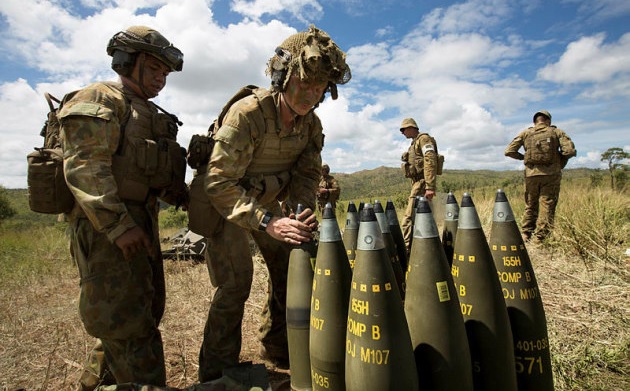Counter-Drone Tech need like that of 155mm Shells

The Pentagon top procurement official emphasizes the pressing need for drone defenses, drawing parallels to the heightened demand for 155mm artillery shells in the midst of conflicts such as those in Ukraine and Gaza.
Under Secretary of Defense for Acquisition and Sustainment, Bill LaPlante, emphasized the urgency of ramping up production for counter-Unmanned Aerial Systems (UAS) during a panel discussion at the Reagan National Defense Forum. He likened the situation to a year ago when the production of 155mm artillery shells had to increase significantly to meet demand.
LaPlante remarks followed his recent visit to Aerovironment, a defense technology company producing the Switchblade loitering munition, deployed in Ukraine and reportedly requested by Israel. The ongoing conflicts have heightened the Defense Department push for advanced capabilities.
Various Pentagon initiatives, such as the Replicator rapid acquisition effort and the technology-focused pillar of AUKUS, are aimed at deploying such defense systems. The U.S. has experienced drone attacks, particularly in Iraq and Syria, where Iranian-backed militia groups regularly target American forces with drone salvos.
Pentagon officials, including LaPlante and Under Secretary for Research and Engineering Heidi Shyu, are actively engaging with companies manufacturing loitering munitions and counter-UAS capabilities. They stress the need for the industrial base to produce these systems in high numbers, drawing on the example of the artillery production ramp-up.
Despite the urgency, the Pentagon has not yet determined the exact quantity of counter-UAS systems required. LaPlante estimates that it will be in the thousands but emphasizes the importance of affordability in the decision-making process.
The funding challenge looms large, as much of the allocated budget for these programs is earmarked for research, development, testing, and evaluation. Shifting funds toward production is crucial for scaling up the manufacturing of these systems and strengthening the supporting industrial base.
However, obstacles lie ahead, with ongoing budget uncertainties, including continuing resolutions and the absence of a full-year appropriation from Congress. The lack of a clear financial pathway may impede the timely production increases needed to address the escalating demand for drone defenses.
LaPlante underscores that the industrial base limited capacity for drones and drone defenses is not due to any fault on their part but rather a consequence of the market not demanding it until now. The imperative now is to align market demands with the pressing need for advanced counter-UAS capabilities.


